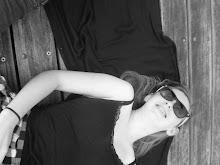Artist statement
Everyday life, the shapes, lines and textures are the foundation of my portfolio. The simple things that are not so simple after all. In this portfolio of images I am exposing the simple things people would simply walk straight past, they are more complex then you may first think.
I decided to call my portfolio “Life’s simplest beauties” and it consists of a
mix of black and white and colour images.
All of my photos have been taken outdoors and they are all part of the themes of lines, shapes, objects and textures.
My original idea for the portfolio was to base it on black and white abstracted landscapes, but as I started taking photos it was hard to get the landscapes to come across as ‘abstracted’. So then I moved towards the idea of shapes and lines, objects and textures both man-made and natural. This idea worked a lot better and photos started turning out more abstract. When I was taking the images I thought of the viewer and basically put myself in their shoes viewing my images and the aim was to have the viewers think ‘What is that’? I have done my job as an artist if this is what the viewers ask themselves.
I did very little editing to the images; I sharpened most of the photos and brightened or darkened them, cropped Number 4 8 and 10. I used the Vignette tool on some of my photos as well, Number 2 and 4.























